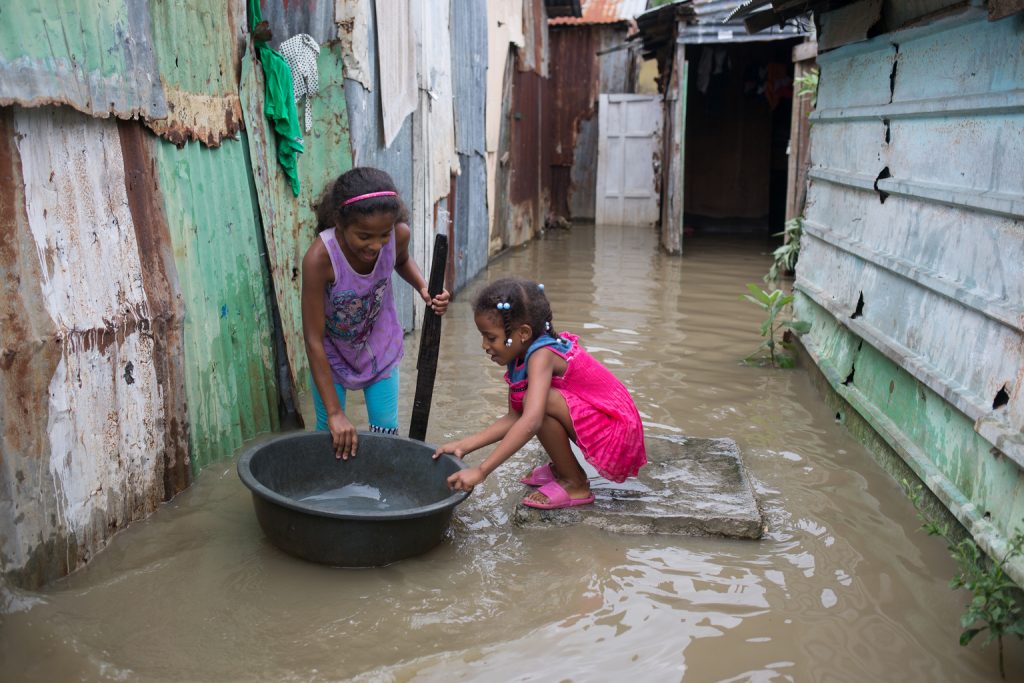Child undernutrition and flooding are highly prevalent public health issues in many developing countries, yet we have little understanding of preventive strategies for effective coping in these circumstances. Education has been recently highlighted as key to reduce the societal impacts of extreme weather events under climate change, but there is a lack of studies assessing to what extent parental education may prevent post-flood child undernutrition. One year after large floods in 2008, we conducted a two-stage cluster population-based survey of 6–59 months children inhabiting flooded and non-flooded communities of Jagatsinghpur district, Odisha (India), and collected anthropometric measurements on children along with child, parental and household level variables through face-to-face interviews. Using multivariate logistic regression models, we examined separately the effect of maternal and paternal education and other risk factors (mainly income, socio-demographic, and child and mother variables) on stunting and wasting in children from households inhabiting recurrently flooded communities (2006 and 2008; n = 299). As a comparison, separate analyses on children in non-flooded communities were carried out (n = 385). All analyses were adjusted by income as additional robustness check.
Overall, fathers with at least completed middle education (up to 14 years of age and compulsory in India) had an advantage in protecting their children from child wasting and stunting. For child stunting, the clearest result was a 100–200% lower prevalence associated with at least paternal secondary schooling (compared to no schooling) in flooded-areas. Again, only in flooded communities, an increase in per capita annual household income of 1,000 rupees was associated to a 4.7–4.9% lower prevalence of child stunting. For child wasting in flooded areas, delayed motherhood was associated to better nutritional outcomes (3.4% lower prevalence per year). In flooded communities, households dedicated to activities other than agriculture, a 50–51% lower prevalence of child wasting was estimated, suggesting farmers and fishermen as the most vulnerable livelihoods under flooding. In flooded areas, lower rank castes were at higher odds of both child wasting and stunting. In the short-term, protracted nutritional response in the aftermath of floods should be urgently implemented and target agricultural livelihoods and low-rank castes. Education promotion and schooling up to 14 years should have positive impacts on improving children nutritional health in the long run, especially under flooding. Policies effectively helping sustainable livelihood economic development and delayed motherhood are also recommended.



